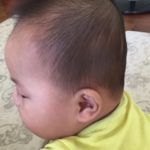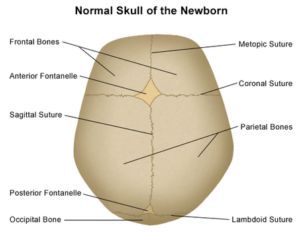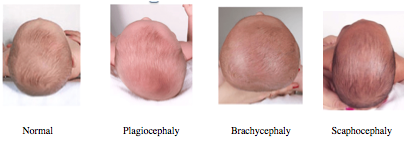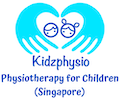Torticollis (Wry Neck) / Plagiocephaly (Flat Head)

Torticollis (wry neck)

Plagiocephaly (flat head)

Plagiocephaly (flat head)
Signs and Symptoms of Torticollis (Wry Neck)
- A head which tilts to one side while the chin tilts to the other
- Limited range of motion in the cervical spine
- A soft lump in the neck muscle (SternoCleidoMastoid or SCM muscle)
A flattened area (plagiocephaly) on one side of the head from always sleeping on that side.
Treatment for Torticollis
- Torticollis is usually mild and will resolve after a few weeks with SCM muscle stretches and strengthening exercises as taught by your physiotherapist.
- These exercises may include ways of encouraging your infant to turn the head to the side that he or she doesn’t like to turn towards. Parents are encouraged to approach on the side their infant doesn’t normally turn to. Parents may also be encouraged to feed the baby more often on the side they wouldn’t normally turn to.
- Making sure your infant has the proper amount of tummy time will also help to solve their torticollis.
- Exercises are specific to each kid.
Signs and Symptoms of Plagiocephaly (Flat Head)
- Plagiocephaly can develop quickly during the first few weeks of life, as an infant’s skull is still malleable and they spend much of their day sleeping on their backs. Their neck muscles are not strong enough at this stage to control the movement of their heads. If baby’s head is lying against a firm flat surface and stays in the same position for long periods of time, then parts of his or her skull may become flattened.
- In some cases, plagiocephaly may be caused by the premature closure of the skull sutures (craniosynostosis). Craniosynostosis causes restriction of growth and the skull develops abnormally as a result. Surgery is required to open the skull sutures.


- The most common type of flat head is where an infant is born with a natural round head, but then develops a flat head due to positioning during the first few weeks. This is called positional Plagiocephaly or Brachycephaly.
- Scaphocephaly usually occurs in preterm infants who spend the first few months of their lives in the NICU or SCN.
Please contact us for an appointment to have your kid assessed if you are unsure of the cause for the plagiocephaly.
How to Prevent Plagiocephaly
- Place your newborn in a variety of different positions throughout the day.
- Encourage lots of tummy time when your kid is awake.
- Use a pillow with a contoured shape to support your kid’s head and neck, when your kid is lying on his/her back.
- For moderate to severe plagiocephaly, parents may want to consider a cranial remodelling / remoulding helmet to re-shape your kid’s head shape.
Please feel free to reach out to us to learn the exercises, stretches and the different postures to treat your kid’s torticollis / plagiocephaly.
Let's get in touch
